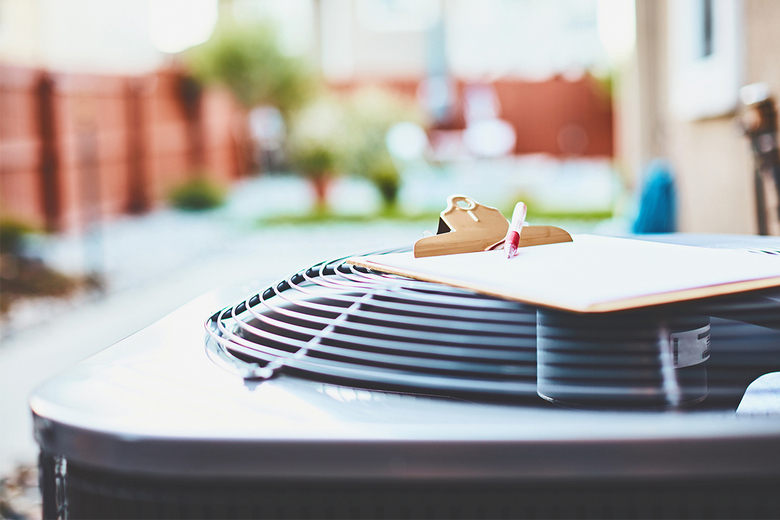Men are bound to live indoors. Wherever they go or whatever work they do, it’s obvious that they will end up indoors. Most of the time people are either in their home or workplace. So, indoor air quality has to be pollution-free. To breathe pure it’s necessary to have improved air quality.
Living in a house with bad air quality results in an unsafe life. People who are chronically ill or suffering from cardiovascular or respiratory diseases are most susceptible to the effects of bad indoor air quality. Each year, about 3.8 million deaths are caused by diseases like lung cancer and stroke due to indoor air pollution. That’s why it is essential to have improved indoor air quality.
To maintain good quality air let’s first check out the main reasons behind indoor air pollution:
- Oil, gas, kerosene, coal wood, and tobacco products can cause indoor air pollution.
- Chemicals released from carpet fumes, and Paint, and VOCs can deteriorate air quality.
- Harmful household cleaners and disinfectants can also be a reason.
- When nonstick pans are heated up over 500F, it releases toxicity, and fumes can damage air quality.
- Formaldehyde fumes in furniture and pesticide pollution is another reason.
- Copy machines and other office equipment may harm air quality, too.
- Central heating and cooling systems, humidification devices and excess moisture also cause poor indoor air quality.
Now let’s discuss how to upgrade your indoor air quality:
1. Inaugurate Whole-house Air Purifier
You might like to install a whole-house purifier to get better indoor air quality. Installing a whole-house purifier can reduce pollen, dust, odors, chemical emissions, and animal dander. It will help to free your home from bacteria, viruses, and molds as it kills them.
2. Clean Filters Regularly
Don’t forget to clean the purifiers regularly. Inspect vacuum cleaner, clothes dryer, and other filters. Check and clean them from time to time if you want to keep your air quality pollution-free. You should change these common household filters as recommended.
3. Change AC Filter
To have better indoor air quality you should change your AC filter when needed. Remember to check if the air filters have stopped working. Change them if necessary or it’ll wear down your AC system as well as decreasing the air quality.
4. Clean Air Ducts If Needed
Air ducts distribute hot and cold air in every room. If they are not maintained properly, they might distribute contaminants. The wrong installation will cause the same problem. To get quality air make sure to check and clean the air ducts when needed.
5. Clean Rugs and Carpets
You should clean your rugs and carpets occasionally to avoid dust mites. Keep your sheets and clothes clean. Dust mites irritate the nose and throat and can make you feel lethargic. Clean well to avoid poor air quality.
6. Control Humidity
Humid and moist conditions are perfect for breeding mold and mildew. These are the reasons for allergy and asthma. A dehumidifier is effective for allergen control. It will be helpful for you in maintaining the right level of humidity.
7. Ventilate Properly
To have better air quality, ventilate airflow by regularly opening the doors and windows. But the crowded cities might have toxic and unpleasant air outside. In that case, choose the time wisely like early morning or late evening. You may like to install the trickle ventilator which allows air from outside only after purifying them so that you can enjoy good quality air indoors.
8. Clean Bathroom Exhaust Fan
Bathroom exhaust fans might become clogged if it’s not cleaned from time to time. It helps remove the moisture. It’s necessary to keep it clean by vacuuming out dust and debris. Make sure it is working efficiently and clears out the moisture of the bathroom.
9. Maintain Kitchen Ventilation
Improved kitchen ventilation is a must to have good indoor air quality. Smoke and particulates can remain stuck if the ventilation system of the kitchen is not cleaned. Gas stove releases pollutants which need to be ventilated properly to get quality indoor air.
10. Use a High-Efficiency Vacuum
A high-efficiency vacuum might help you to keep dust and debris away. To avoid the buildup of dust particles and prevent allergens from accumulating, use a high-efficiency vacuum, and change the bedsheets and pillowcases periodically.
11. Greenery Indoor
Use indoor plants to have fresh oxygen always. House plants can act as your natural purifier. They can be impressive at filtering out benzene, formaldehyde, and ammonia which are harmful chemicals to breathe. You might like to have aloe vera, bamboo palms, azaleas, garden mums, etc as natural air cleaners. But if you are facing indoor allergens, keeping them outdoors will be better for you.
12. No-smoking Zone
Make your home a no-smoke zone to have quality indoor air. To breathe healthily it is essential to avoid smoking at home. Smokes of nicotine ruin not only your health but also those who are residing with you and breathing the same air. To enjoy great indoor air quality make sure to keep your home free from smoking.
13. Test for Radon
A radon test helps find out the problem with your indoor air. Redon is a kind of byproduct of decaying radioactive matter. It’s usually colorless and odorless. These tests give you a head start to prevent and solve the problem. To improve your indoor air quality, it can be an important test to have. In fact, radon testing in Denmark homes is common practice.
Good indoor air quality is crucial to lead a healthy life. Breathe fresh to live fresh. To avoid severe health problems, we need to breathe quality air. It is difficult to have quality air outside but we can have good quality indoor air if we try to take the necessary measures. Let’s try to upgrade our indoor air quality and lead a healthy and hearty life.
Stay home, stay safe!




















